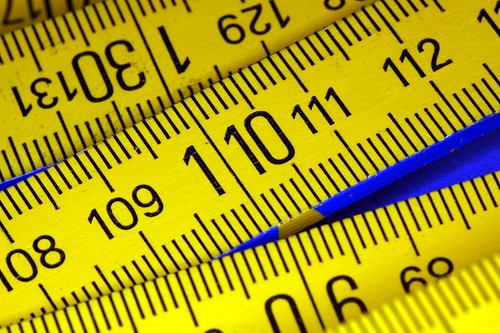 Runners, it's time to put this craziness to rest. I hear it repeated, over and over again: runners seeking treatment from clinicians that relate the running injury to a leg length discrepancy. Worse yet, they then wonder why they aren't getting better.
Runners, it's time to put this craziness to rest. I hear it repeated, over and over again: runners seeking treatment from clinicians that relate the running injury to a leg length discrepancy. Worse yet, they then wonder why they aren't getting better.
It is highly unlikely - I repeat, highly unlikely - that your leg length discrepancy has any relevance to your running injury. Period.
It is time for clinicians to get over this "diagnosis of irrelevance" for the vast majority of clinical scenarios. It is utter crap. It does a disservice to both the current sport sciences related to running and the clinical reasoning process. But it pays - handsomely.
Listen, off in the distance, I can hear it again …
"I can see that discrepancy when you stand, one hip is higher than the other … when you are lying down, I can tell that your legs are "off". Bingo, there's your problem. I think we can fix it with treatment ..."
However, there is a step-wise hypothetical construct involved that breaks down more than once in the thought process.
Assessment: Consider the accurate assessment of the issue first and foremost. How does one establish that a leg length discrepancy even exists - relevant or otherwise? Palpation of anatomical landmarks is horrible at best with poor inter-rater reliability (and thus validity) associated with it. Let's just say you are going to be, well, "not too accurate". Good luck with that one.
The only way that it can be assessed accurately is with a standing x-ray - with measurements performed on the films. That eliminates about 99.9% of all patients with supposed leg length discrepancies because, you guessed it, nobody has an x-ray taken to accurately assess the issue in the first place.
Adaptation: Let's just say (in our perfect little world) that the x-ray reveals the aforementioned dastardly discrepancy. Then, the question is - how long has it been there? Does the human body, in all of its meticulous ability to adapt to the imposed demands of living on planet earth, suddenly break down without warning from a problem that has had a painfree existence (in relative secrecy) for decades? Doubtful, since it doesn't serve us well with simple things - like survival.
Relevance: Here's a thought: it might be normal for the individual. If we use MRI (of the shoulder, knee or spine) as an example, 70% of asymptomatic patients have an abnormal image. Hmmm, that poses some problems. An abnormal image doesn't predict pain in the majority of patients! So a leg length discrepancy - an "abnormality" if you will - may have absolutely no relevance to the onset of the symptoms with running. Why did it suddenly become problematic and manifest itself in hip pain during that 18 mile long run? Note: the discrepancy wasn't the problem.
Context: Running involves unilateral stance - standing on one leg at a time. Place the foot, balance and stabilize, and toe-off so that we can get onto the opposite limb. Lather, rinse, repeat. What does a difference between limbs do to the runner when we are never needing to be "even" in the first place? We will make stance as effective as possible regardless of the length of the limb.
Etiology: With the state of the current research, we know that the primary factor in the etiology of running injuries is - drum roll please - training. Up to 70% of injuries are directly related to the training program alone. But regardless of the literature, clinicians continue to resort to micromanaging problems that have no relevance to the onset of symptoms.
It is time to get over it. As it stands right now, in the vast majority of cases, leg length discrepancies are the gift that keep on giving - you could, as a clinician, always find an excuse to treat it, always blame it on the onset of symptoms x, y, or z, and always find an interminable treatment for it that will probably be reimbursed reasonably well.
Clinicians are getting paid to perpetuate myths. And it needs to stop. The sooner, the better.
Photo credits: pasukaru76
 "Running Injuries: Etiology And Recovery- Based Treatment" (co-author Bridget Clark, PT) appears in the third edition and fourth editions of "Clinical Orthopaedic Rehabilitation: A Team Approach" by Charles Giangarra, MD and Robert C. Manske, PT.
"Running Injuries: Etiology And Recovery- Based Treatment" (co-author Bridget Clark, PT) appears in the third edition and fourth editions of "Clinical Orthopaedic Rehabilitation: A Team Approach" by Charles Giangarra, MD and Robert C. Manske, PT.
 Allan Besselink, PT, DPT, Ph.D., Dip.MDT has a unique voice in the world of sports, education, and health care. Read more about Allan here.
Allan Besselink, PT, DPT, Ph.D., Dip.MDT has a unique voice in the world of sports, education, and health care. Read more about Allan here.
 Top 5 finalist in three categories: "Best Overall Blog", "Best PT Blog" and "Best Advocacy Blog".
Top 5 finalist in three categories: "Best Overall Blog", "Best PT Blog" and "Best Advocacy Blog".